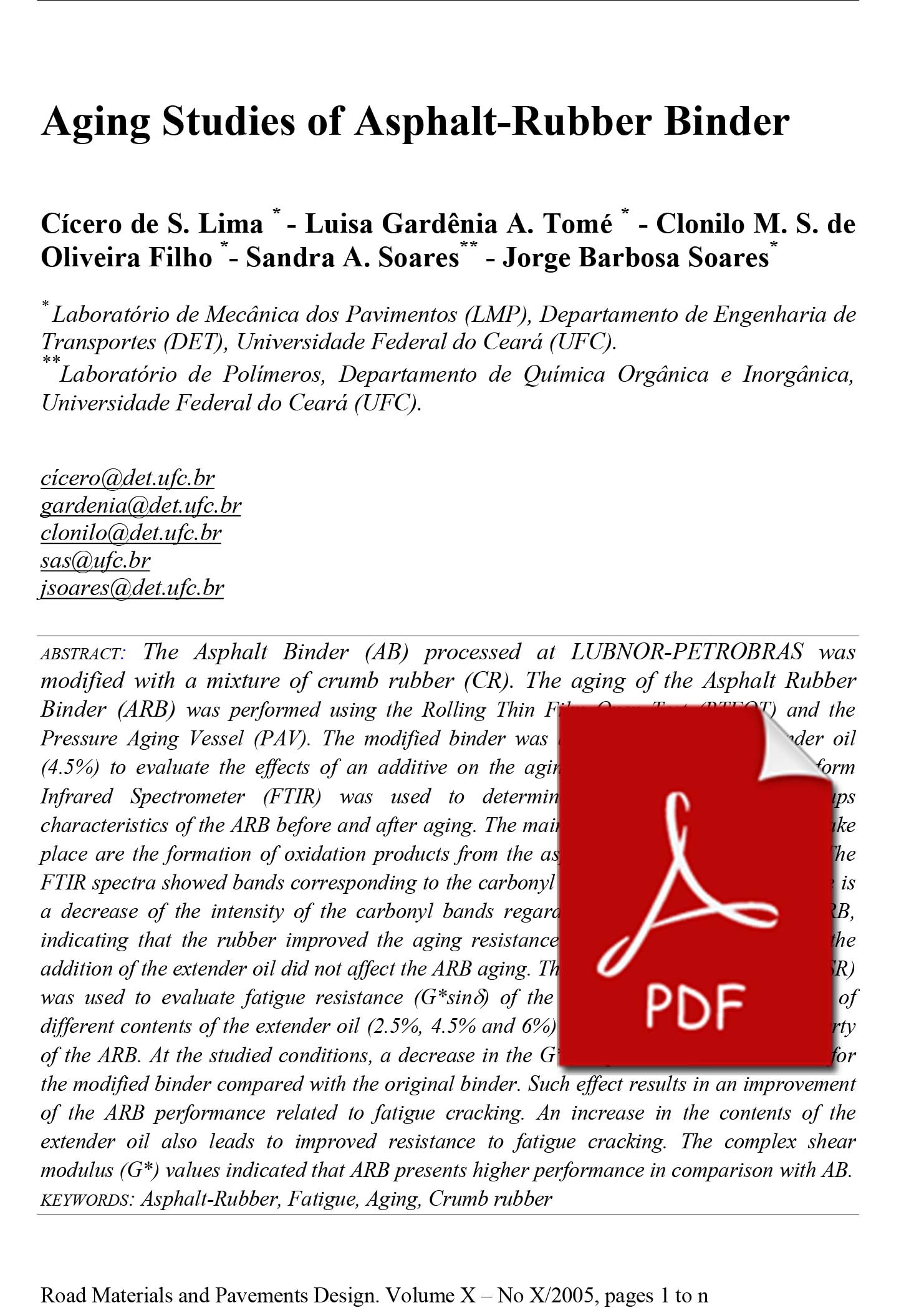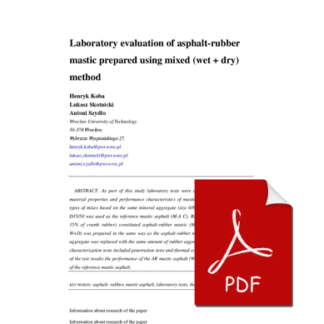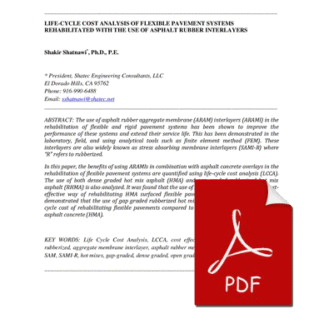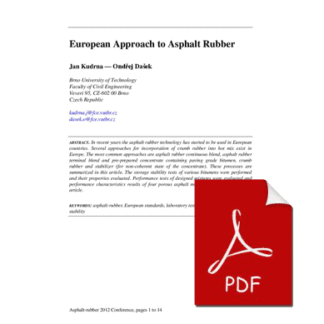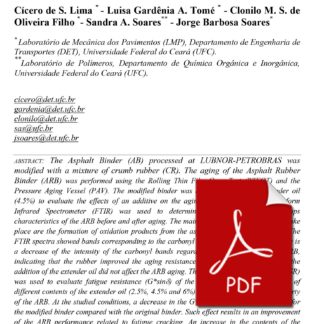Description
The Asphalt Binder (AB) processed at LUBNOR-PETROBRAS was modified with a mixture of crumb rubber (CR). The aging of the Asphalt Rubber Binder (ARB) was performed using the Rolling Thin Film Oven Test (RTFOT) and the Pressure Aging Vessel (PAV). The modified binder was also prepared using extender oil
(4.5%) to evaluate the effects of an additive on the aging process. A Fourier Transform Infrared Spectrometer (FTIR) was used to determine the main functional groups characteristics of the ARB before and after aging. The main chemical modifications that take place are the formation of oxidation products from the asphalt binder and the rubber. The FTIR spectra showed bands corresponding to the carbonyl area (1600 to 1750cm-1). There is
a decrease of the intensity of the carbonyl bands regarding the oxidative aging of ARB, indicating that the rubber improved the aging resistance of the binder. It seems that the addition of the extender oil did not affect the ARB aging. The dynamic shear rheometer (DSR) was used to evaluate fatigue resistance (G*sinδ) of the AB, ARB and also the effect of different contents of the extender oil (2.5%, 4.5% and 6%) in the fatigue resistance property
of the ARB. At the studied conditions, a decrease in the G*sinδ parameter was observed for the modified binder compared with the original binder. Such effect results in an improvement of the ARB performance related to fatigue cracking. An increase in the contents of the extender oil also leads to improved resistance to fatigue cracking. The complex shear modulus (G*) values indicated that ARB presents higher performance in comparison with AB.

